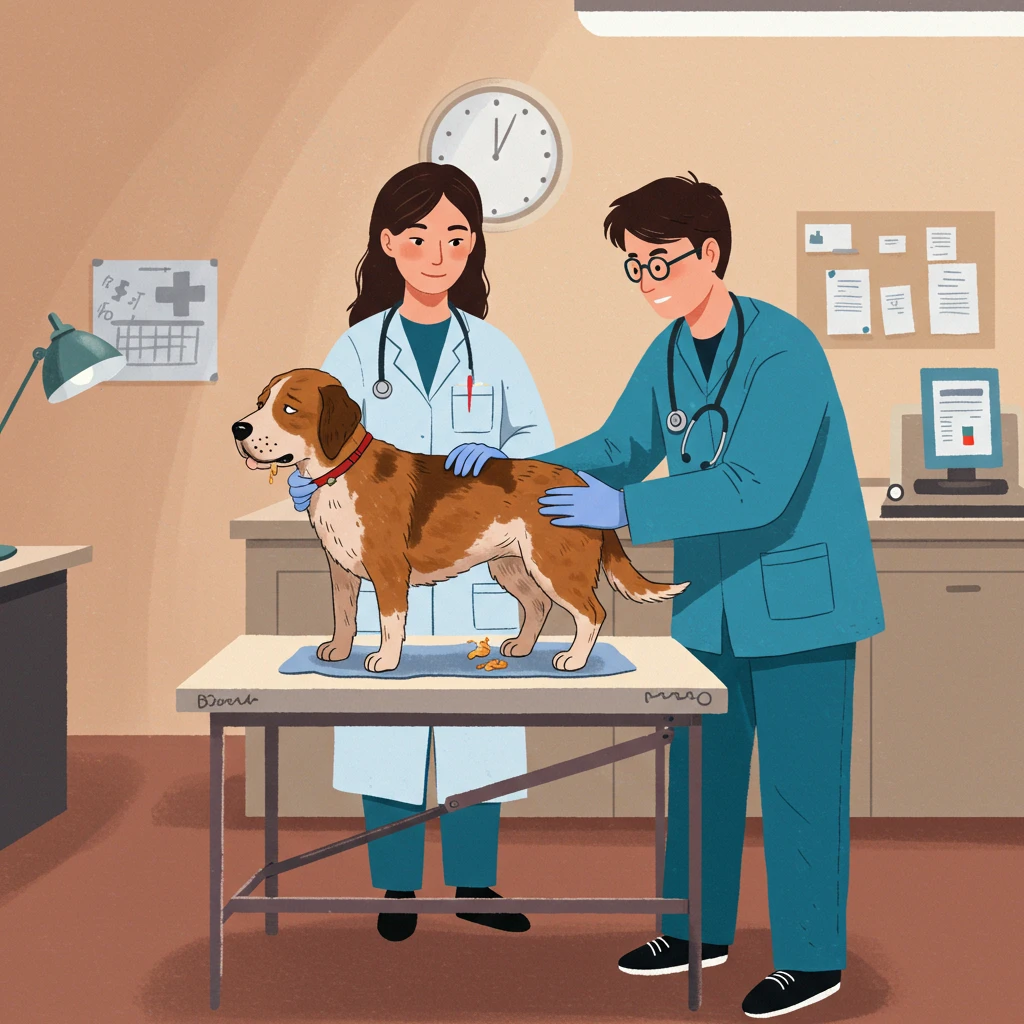Diarrhea in dogs is a common problem that can be caused by various factors, ranging from an inappropriate diet to more serious infections. When diarrhea is accompanied by blood, it becomes a concerning situation that requires immediate attention. In this article, we’ll explore the possible causes, actions to take, and best practices for managing this critical situation.
Possible Causes of Bloody Diarrhea in Dogs
Bacterial or Viral Infections
Bacterial infections, such as those caused by Escherichia coli, Salmonella, or Campylobacter, can cause severe digestive upset. Similarly, viruses like canine parvovirus or coronavirus can lead to severe symptoms, including diarrhea with blood.
Intestinal Parasites
Parasites, like roundworms or giardia, can also cause bleeding in the stool. A parasitic infestation is particularly concerning in puppies and immunocompromised dogs.
Food Poisoning
A sudden change in diet or the consumption of toxic foods (like chocolate or certain types of plants) can irritate the digestive system and lead to bleeding.
Inflammatory Bowel Disease
Conditions like colitis or Crohn’s disease in dogs can cause chronic inflammation, leading to bloody stools.
Other Causes
More serious problems, such as tumors or gastric ulcers, can also be the cause. In all cases, the presence of blood in the stool is a warning sign that requires a veterinary evaluation.
What to Do Immediately?
Assess Your Dog’s General Condition
Before taking any action, assess your dog’s general condition. Observe if they show other symptoms, such as:
- Vomiting
- Weakness
- Loss of appetite
- Fever
If your dog shows signs of distress, discomfort, or if you have concerns about their health, contact your veterinarian immediately.
Don’t Delay Consulting a Veterinarian
Diarrhea with blood is a veterinary emergency. Do not attempt to treat the problem yourself without consulting a professional. A veterinarian can perform a clinical examination and potentially diagnostic tests to determine the underlying cause.
Gather Useful Information for the Veterinarian
When you contact your veterinarian, try to provide as much information as possible, including:
- The duration of the diarrhea
- The frequency of bowel movements
- The color and consistency of the stool
- Changes in diet or behavior
- Your dog’s medical history
Concrete Examples and Use Cases
Case 1: Ingestion of a Toxic Food
A dog owner noticed their pet had diarrhea with blood after ingesting table scraps containing onions. After consulting a veterinarian, it was decided to treat the poisoning with medication and intravenous fluids. In this case, rapid intervention saved the dog’s life.
Case 2: Viral Infection
Another owner brought their puppy to the vet after noticing bloody, liquid stools. After tests, it turned out the puppy had contracted parvovirus. The veterinarian recommended hospitalization to administer fluids and antiviral treatment. Thanks to early detection and appropriate care, the puppy fully recovered.
Case 3: Intestinal Parasites
An older dog showed signs of diarrhea with blood. After an examination, the veterinarian discovered a giardia infestation. Antiparasitic treatment was recommended, and after a few days, the dog returned to a normal state of health.
Key Points and Best Practices
- Monitor diet: Avoid giving table scraps or inappropriate foods, especially those known to be toxic.
- Vaccinations and prevention: Ensure your dog is up to date on their vaccinations, especially against viral diseases like parvovirus.
- Check for parasites: Regularly perform parasite screenings, especially in regions where they are common.
- Hydration: Diarrhea can lead to dehydration. Make sure your dog has access to fresh water at all times.
- Do not administer medication without advice: Avoid giving over-the-counter medications without your vet’s advice, as some can worsen the situation.
- Prompt consultation: If diarrhea with blood persists for more than 24 hours or is accompanied by other symptoms, consult a veterinarian without delay.
Conclusion
Diarrhea with blood in a dog is an alarming symptom that requires immediate attention. By being vigilant and knowing the steps to take, you can save your four-legged companion’s life. Remember that only a veterinary consultation can establish an accurate diagnosis and implement appropriate treatment. By looking after your dog’s health and taking the right measures, you can ensure they live a long and healthy life.
Have you noticed any other symptoms or recent changes in your dog that might be related to their current condition?







